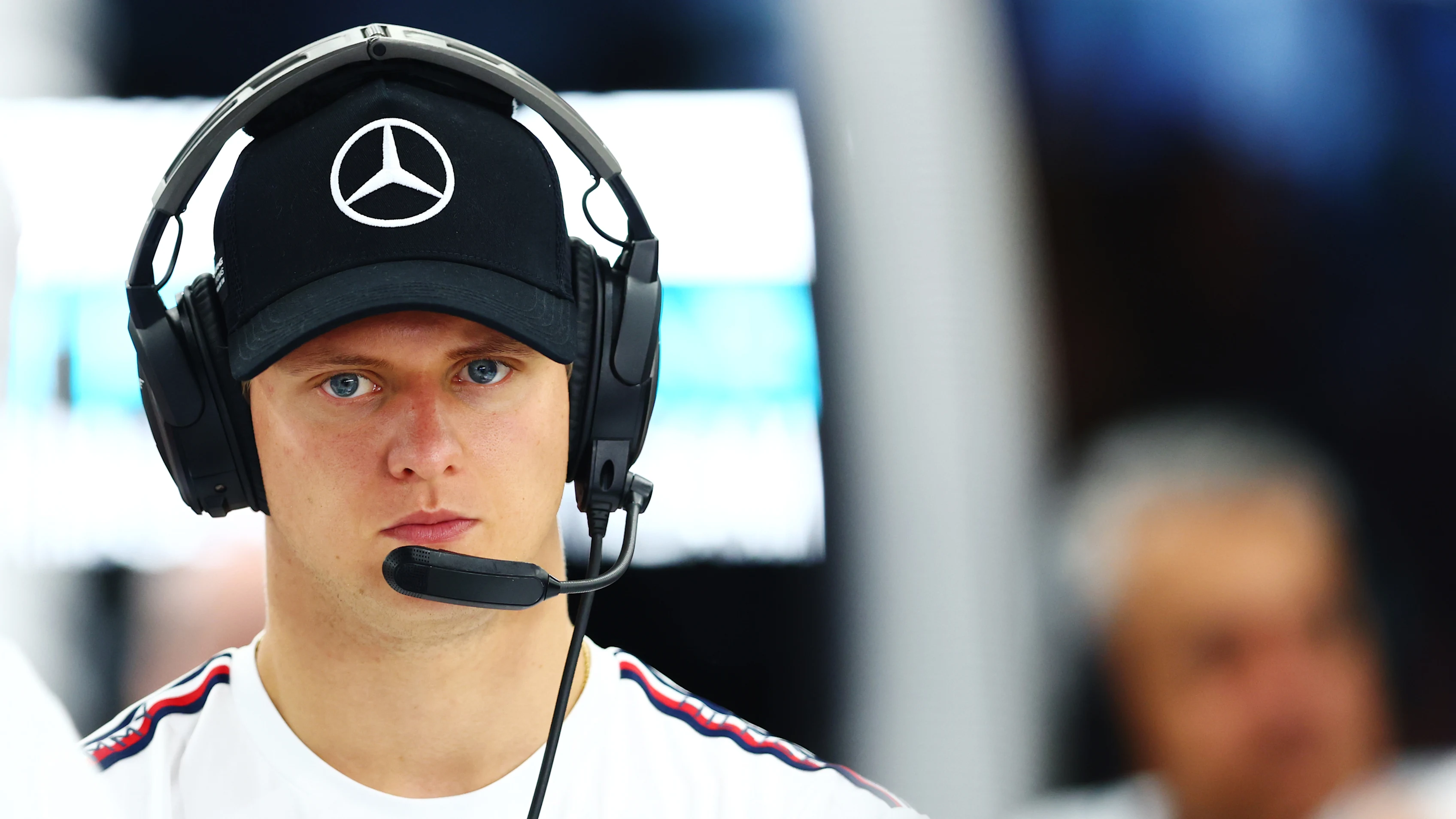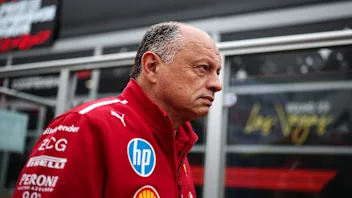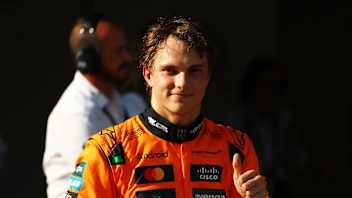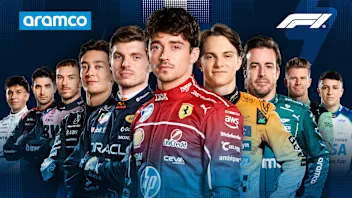Rapid decisions, driver skills and intricate procedures – Why race starts are so critical in F1

Twenty F1 drivers. Five red lights. An instant that can make or break a race. The start of a Formula 1 Grand Prix is a critical moment, demanding extraordinary skill from the drivers and rapid decision making from their teams.
The F1 Explains Podcast has been exploring the race start with Mick Schumacher, former Haas driver and current Mercedes reserve driver, and Bernie Collins, former Head of Race Strategy at Aston Martin.
F1 EXPLAINS: How drivers and teams master the adrenaline-filled start to a Grand Prix
F1 cars line up on the starting grid in 10 staggered rows of two. Each car is eight metres or 26 feet ahead of the next car back. Pole position, at the very front of the grid, home of the fastest driver in qualifying, is usually on the ‘racing line’ – the side of the track the drivers use on the run down to the first corner.
On a gantry above the grid, five red starting lights illuminate one-by-one. Then, after a randomly-chosen and computer-controlled wait of between 0.2 and 3 seconds, they all go out at once. The race is on.
F1 drivers are extraordinary humans with rapid reaction times. On average, they launch their cars just 0.2 seconds after the lights go out.
"I love the start," says Mick Schumacher, who started 43 races for Haas F1 Team in 2021 and 2022 before becoming Mercedes’ reserve driver. "The start is one of the places I felt most confident and comfortable. It’s one of the most exciting moments of the race."
Team members on the pitwall, like strategist Bernie Collins, know the start itself is all about the driver.
READ MORE: Hamilton expecting every week to be ‘emotional’ during final season with Mercedes
"It’s the one point where you can’t do anything," she says. "You’re like a spectator. You can’t interact with the driver – they’re so focused on what they’re doing."
Launching an F1 car from the grid takes co-ordination of hand, foot and brain.
"You have to feed the clutch out [using a paddle switch on the steering wheel], but also simultaneously apply power [with the accelerator pedal]," explains Schumacher. "It’s a very fine line. You always want to have a bit of wheelspin because it’s going to give you that bit more power."

F1 drivers launch their cars, on average, 0.2 seconds after the starting lights go out. The race from the grid to the first corner is a manic mix of offensive and defensive driving. Fast starters fight to overtake. Slow starters scramble to not be overtaken.
"It depends on whether you’ve had a good start or not," says Schumacher. "Am I choosing the risky line on the outside [of the first corner]? I might gain two or three positions. Or am I going for the safe and go to the inside? It might be blocked."
READ MORE: Formula 1 becomes first motorsport competition to use Pirelli FSC-certified tyres
On the pitwall, strategists are watching the opening moments anxiously.
"You’re watching to see where the driver comes out of Turn 1," says Bernie Collins. "You get the cars to a few turns in, and that’s when you have your positions.
"You start to look at how that affects strategy and your race going forward. Who’s in front, who’s behind you? It takes a few corners to get to that static position that you can start to do all your strategy simulations from."

The start procedure and race to the first corner require extraordinary skill from an F1 driver. Schumacher says it’s the moment racing instincts kick in.
"When you’re in the moment, you don’t think about anything. If you were to think about everything, the reaction time will slow down. If you do it by instinct it’s just going to be that bit faster."
NEED TO KNOW: The most important facts, stats and trivia ahead of the 2024 Bahrain Grand Prix
Schumacher and Collins break down the start of a Formula 1 Grand Prix in the full episode of the F1 Explains podcast. They tell hosts Katie Osborne and Christian Hewgill how drivers prepare their cars for the start, what happens in the cockpit at the moments the lights go out, and what happens inside a team if a car gains or loses multiple places at the start.
F1 Explains is the official F1 podcast which answers listeners’ questions about the sport. You can send yours as an email or a voice note to F1Explains@F1.com.
Episodes are available on Apple Podcasts, Spotify and all major podcast apps.
Next Up
Related Articles
 ExclusiveHow APXGP was brought to life by costume designer Julian Day
ExclusiveHow APXGP was brought to life by costume designer Julian Day Vasseur says he misjudged impact of switching focus to 2026
Vasseur says he misjudged impact of switching focus to 2026 Piastri reveals lessons that will ‘only make me stronger’
Piastri reveals lessons that will ‘only make me stronger’ Beyond The GridThe best of 2025, from Norris’ evolution to Brad Pitt’s ‘need for speed’
Beyond The GridThe best of 2025, from Norris’ evolution to Brad Pitt’s ‘need for speed’ Power RankingsWho did our judges rank as the best F1 driver of 2025?
Power RankingsWho did our judges rank as the best F1 driver of 2025? 10 ways to get your Formula 1 fix during the winter break
10 ways to get your Formula 1 fix during the winter break